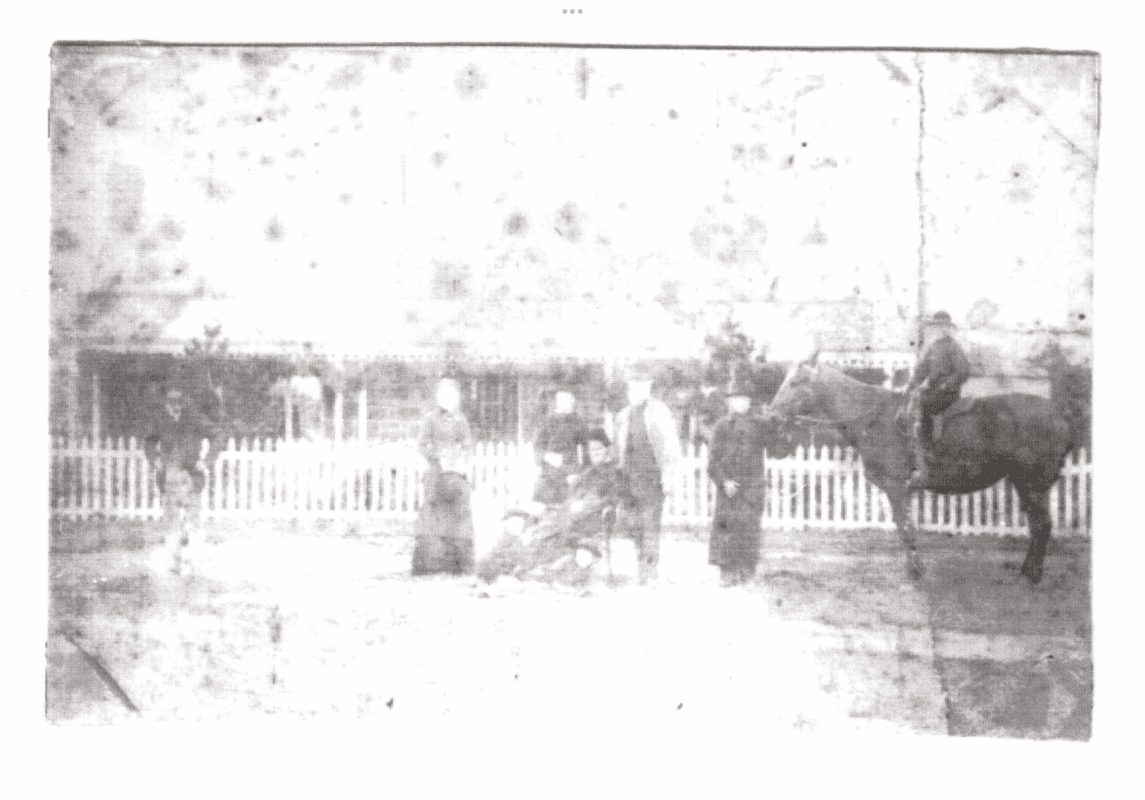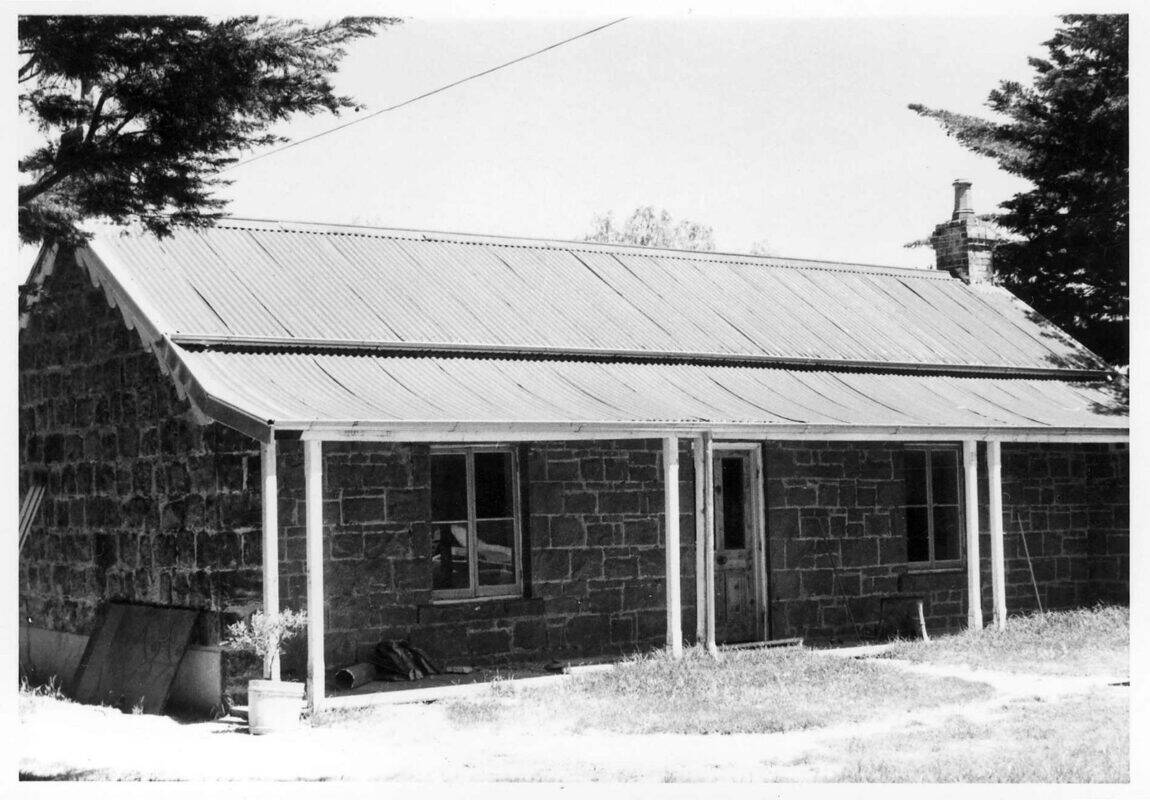
1856 ROTHWELL TOWN ON THE LITTLE RIVER
Public Records Office of Victoria.
PROV, VPRS 8168/P0002, FEATR398; ROTHWELL TOWN ON THE LITTLE RIVER; TAYLOR
Colony of Port Philip Bay to early Victoria
Pre 1860
The history of Tarcombe is woven into the broader tapestry of the Rothwell and Little River areas, with its origins tracing back to very early colonisation. The earliest recorded presence on the property dates back to 1856, as shown on historical maps of Rothwell and Little River. These maps indicate the existence of the North & Grass Homestead at the boundary of allotments 44 and 45 – or what is now our foaling down paddocks. Despite the lack of official gazettes or records confirming a formal squatter or pastoral run in this specific location, it is evident that North & Grass occupied the land. The early parish maps reveal that this land was reserved for the township of Rothwell, which suggests that North & Grass were likely unregistered squatters. Nevertheless, they held numerous other tracts of registered land in the vicinity.
By the early 1860s, the land was known to be under pasture, managed by Frederick Ryland (Wyndham City Heritage Review 1997). Frederick Ryland’s presence in Little River dates back even earlier, with records from 1848 listing him as a poundkeeper—a position of considerable local importance. The pound, responsible for managing stray livestock, was situated at the end of what is now Rothwell Road, not far from Tarcombe.

SUNNYSIDE, circa 1890s
Source: Thomson family tree, Ancestry.com.au

SUNNYSIDE, early 1900s
Source: Thomson family tree, Ancestry.com.au
“Sunnyside” & The Thomson Family
1865 – 1911
The next significant chapter in the history of Tarcombe begins with Charles Thomson, the local Railway Inspector and Superintendent, who purchased the original crown allotments that would become the foundation of the property as we know it today.
Charles Webster Thomson was born on in 1825, in Prestonpans, East Lothian, Scotland. He married Fanny Pratt in 1853, in Staten Island, New York and died in 1905, in Little River.
On February 17th 1864, Charles Thomson acquired Crown Allotment 46 & 47, as recorded by the Land Titles Office. The remaining portion of the present-day property, allotment 48 was not purchased by Thomson until September 14, 1882. This allotment was acquired from William Ashby of Bulban, who had secured the original crown grant on March 2, 1864. William Ashby, the licensee of the Rothwell Inn (formerly the Travellers Inn) from 1861 to 1869, played a notable role in the early development of the area.
Following Charles Thomson’s death in 1905, the ownership was transferred to his sons, George James Thomson, a stationmaster in Shepparton, and William Charles Thomson, a produce merchant residing in Surry Hills. This transfer was officially registered on January 24, 1911, presumably in preparation for the sale of the property to Edward Laurence Gleeson later that year.
Historical maps also indicate that Charles Thomson owned Allotments 44 and 45. However, these titles are no longer part of the current Tarcombe property.
Construction of Sunnyside
Originally named Sunnyside, Charles Thomson was responsible for the construction of the current Tarcombe homestead and its outbuildings. While the exact date of construction for the existing bluestone building remains uncertain, it is believed to have been built in the mid to late 1860s, following Thomson’s acquisition of the land in 1865. It is speculated that if the original North & Grass homestead was made of stone—though it is more likely to have been wooden—some materials may have been repurposed in the new construction.
The homestead features a back gable of field stone construction with remnants of wooden shingle roofing, suggesting that it might be constructed from part of the original homestead. Charles Thomson likely added the more grandiose bluestone front at a later date. Photographs from the late 1890s show the house with a tin roof already installed, with no remnants of wooden shingles on the front gable. The presence of an internal window between the two gables indicates that one section of the house predates the other. Additionally, the house is built across allotment boundaries, which might suggest that the original structure was erected before the formal surveying of the allotments.

TARCOMBE, 1949
Source: Weekly Times (Melbourne, Vic. : 1869 – 1954) via Trove
The Gleeson Family
1911 – 1966
On March 1st 1911, Edward Laurence Gleeson, a farmer from Longwood, expanded his land holdings in the Little River area by purchasing 107 acres across multiple titles, which included the Sunnyside property. This acquisition augmented his existing estate, known as “Avonmore,” by incorporating the newly obtained Sunnyside into his broader holdings.
Gleeson or his family also owned significant tracts of land around the Tarcombe township in Victoria. This connection may have influenced his decision to rename the amalgamated properties to Tarcombe, aligning with the family’s broader landholdings. Although further research is needed to confirm this linkage, probate records and general historical research suggest that the Gleeson family were likely early settlers in that region.
Edward Laurence Gleeson passed away in 1919. His wife, Mary Ann Elizabeth Gleeson inherited the property following his death. The title was officially transferred to her on March 24, 1920, after probate was granted. It appears that Mary Ann Elizabeth Gleeson subsequently leased the land to her son, as indicated by probate documents.
On September 21, 1948, the property was formally transferred to his son, Edward Francis Gleeson, a grazier from Little River. By this time, the estate was approximately 850 acres, reflecting the growth and consolidation efforts of the Gleeson family.
The Gleeson family is responsible for the planting of the large mature cyprus, pine and peppercorn trees now seen on the property.
The 1960s marked a significant period of change for the Tarcombe estate. The property was divided, and the house along with allotments 44, 45, 46, 47, 48, and additional lots 9 and 10 were separated into a distinct title. This portion of the estate, including the current day Tarcombe, was sold to Walter Aubrey Scott in 1966.

TARCOMBE, 1975
Source: Collins, J. T. (1975). Little River Tarcombe. State Library of Victoria.

TARCOMBE BARN, 1975
This is the side facing our dressage arena.
Source: Collins, J. T. (1975). Little River Tarcombe. State Library of Victoria.
Late 20th Century and early 21st Century
1966 onwards
The modern chapter of Tarcombe began with its purchase by Walter Aubrey Scott (1907 – 1989) on December 2nd 1966. Scott, a dentist and grazier residing from Toorak, was also a cricketer. Scott played a single first-class cricket match for Victoria during the 1929–30 season.
The property changed hands again on August 31st 1982, when it was purchased by John Warden Arthur Robertson (1940–2001). Robertson was not only a prominent business figure but also an Australian rules footballer. Robertson played for the Hawthorn and Richmond football clubs in the Victorian Football League (VFL). His football career was marked by his early retirement at the age of 25 to focus on his burgeoning business interests. He later served as a director of the Richmond Football Club, a testament to his ongoing influence in the sports community.
During Robertson’s ownership, the property underwent further changes as it transitioned to a lifestyle property instead of a working farm. Remnants of this includes the old tennis court (now chicken pen).
The various allotments that comprised Tarcombe were gradually split off into separate titles and sold. The current day Tarcombe property was sold to Patrick “Paddy” Guinane (1939 – 2019) and his wife Glenda in 1986.Paddy was an Australian rules player who played in the Victorian Football League (VFL) between 1958 and 1968 for the Richmond Football Club. During the 1970s, Guinane was a science teacher at Richmond Technical College, later becoming Vice-Principal.
The property remained the family home of the Guinane family until purchased in 2021 by the now owners, the Phillips family, who are lovingly restoring it whilst retaining the historical features that make this property so beautiful.
